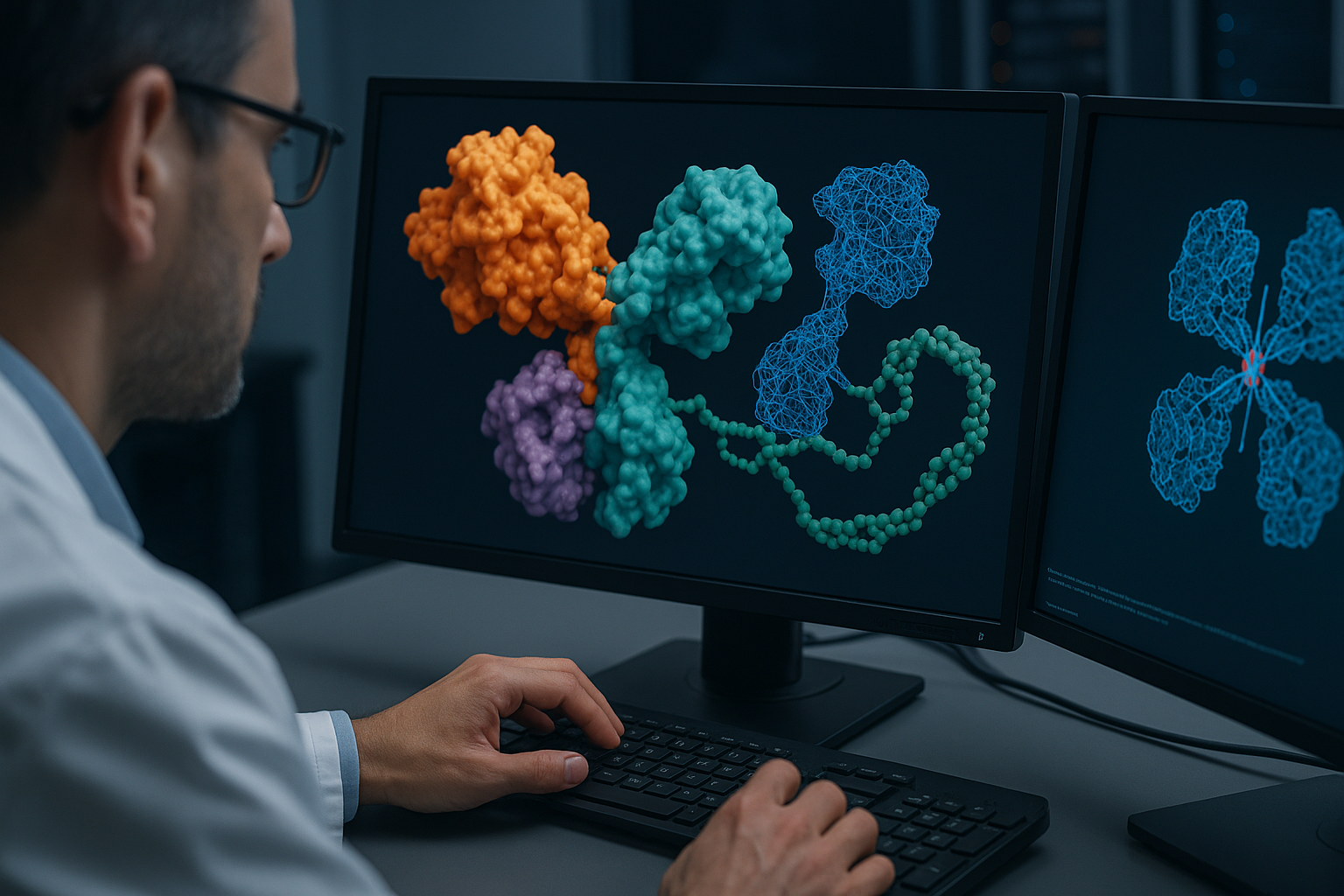How AI is shaping the next generation of nanobody drugs
The timeline of nanobody development reflects a steady series of innovations. In 2001, the term "nanobody" was introduced by Ablynx, and by 2018, the first nanobody-based therapeutic, Caplacizumab, was approved in the EU for thrombotic thrombocytopenic purpura. Since then, additional approvals have expanded to cancer, autoimmune diseases, and imaging diagnostics.

Nanobodies, tiny, single-domain antibody fragments derived from camels and sharks, are emerging as game changers in diagnostics and therapeutics. Their ability to bind hard-to-reach targets and their compatibility with synthetic biology platforms make them ideal candidates for next-generation treatments.
In a landmark review published in the journal Biology, titled "Nanobodies: From Discovery to AI-Driven Design", researchers Haoran Zhu and Yu Ding from Fudan University chart a transformative journey in antibody engineering - from the discovery of camelid-derived nanobodies to cutting-edge artificial intelligence (AI)-assisted design. Their comprehensive analysis underscores how AI integration is revolutionizing nanobody structure prediction, humanization, and therapeutic potential across diverse disease targets.
How have nanobodies evolved since their discovery?
Nanobodies were first identified in the early 1990s. The breakthrough came in 1993 with the discovery of heavy-chain-only antibodies in camels, which provided the foundation for developing nanobody fragments. Their unique structure, consisting of a single variable domain, offered high specificity, stability, and the ability to target cryptic epitopes inaccessible to traditional antibodies.
The timeline of nanobody development reflects a steady series of innovations. In 2001, the term "nanobody" was introduced by Ablynx, and by 2018, the first nanobody-based therapeutic, Caplacizumab, was approved in the EU for thrombotic thrombocytopenic purpura. Since then, additional approvals have expanded to cancer, autoimmune diseases, and imaging diagnostics.
Parallel innovations in display technologies, such as phage, yeast, and ribosome display, facilitated rapid screening and library development. More recent technologies like NestLink and peptide barcoding have further refined the process by enabling high-throughput, in vivo functional screening with enhanced resolution.
What structural and functional advantages do nanobodies offer over traditional antibodies?
The review highlights the superior characteristics of nanobodies in therapeutic and biotechnological contexts. Their compact size (12–15 kDa) enables deeper tissue penetration, better epitope accessibility, and efficient production in microbial systems like E. coli. This contrasts with traditional IgG antibodies, which are significantly larger and more complex.
Key advantages include:
- Extended CDR3 loop: Enables nanobodies to bind concave or cryptic epitopes inaccessible to conventional antibodies.
- Greater thermal and pH stability: Makes nanobodies suitable for challenging environments, including oral formulations and extreme storage conditions.
- Absence of light chain: Simplifies structure and reduces aggregation risks, though it may lead to rapid renal clearance, necessitating half-life extension strategies.
- Multiepitope targeting: Nanobodies can be engineered to bind multiple distinct sites on a single antigen, enhancing neutralization and specificity. This has shown significant utility in combating viral variants like SARS-CoV-2 Omicron strains.
Furthermore, structural studies show that nanobodies can access dynamic protein regions, such as GPCR activation states, and bind to enzyme clefts and lipid/carbohydrate moieties - tasks typically out of reach for bulkier antibodies. Camelid- and shark-derived nanobodies, in particular, offer different modes of stabilization, solubility, and antigen recognition that can be exploited in diverse contexts.
How is artificial intelligence transforming nanobody design and humanization?
The most transformative advancement outlined in the study is the integration of AI into the nanobody engineering pipeline. Traditionally, nanobody optimization, especially humanization and affinity maturation, relied on trial-and-error mutagenesis and costly screening campaigns. These limitations are now being addressed through AI-assisted approaches.
AI-Driven Structural Modeling:
AI tools such as AlphaFold2, AlphaFold3, NanoNet, and IgFold are revolutionizing the prediction of 3D nanobody structures, particularly those with long and flexible CDR3 loops. However, challenges persist, particularly in modeling kinked CDR3 loops and in antigen-docking accuracy—where AlphaFold3 still achieves <50% success in many benchmark tests.
Paratope Prediction and Antigen Docking:
Advanced models like ParaAntiProt and NbX leverage deep learning to predict paratopes and re-rank antigen-binding poses with high accuracy. These systems improve early-stage therapeutic screening and reduce reliance on physical assays.
Humanization:
Conventional camelid nanobodies must be humanized to reduce immunogenicity. AI tools such as Llamanade, AbNatiV, and HuDiff offer frameworks for predicting and introducing mutations that maintain functional binding while minimizing immune response. HuDiff, for example, generated humanized nanobodies with enhanced binding affinity compared to the original alpaca sequences.
De Novo Design:
Emerging methods are now enabling fully computational, de novo nanobody design. The Baker lab’s RFdiffusion pipeline uses AI to generate new CDR loops targeting predefined antigen epitopes. When combined with ProteinMPNN and RoseTTAFold2, this workflow can generate functional nanobodies from scratch, bypassing traditional library screening entirely.
In one case, nanobodies designed using this method targeted challenging antigens such as SARS-CoV-2 RBD and IL-7Rα with high specificity and moderate affinity, marking a paradigm shift toward fully in silico nanobody therapeutics.
Overall, this review underscores a radical shift in nanobody research, where traditional immunization and screening protocols are increasingly being augmented or replaced by AI and computational design.
- FIRST PUBLISHED IN:
- Devdiscourse










